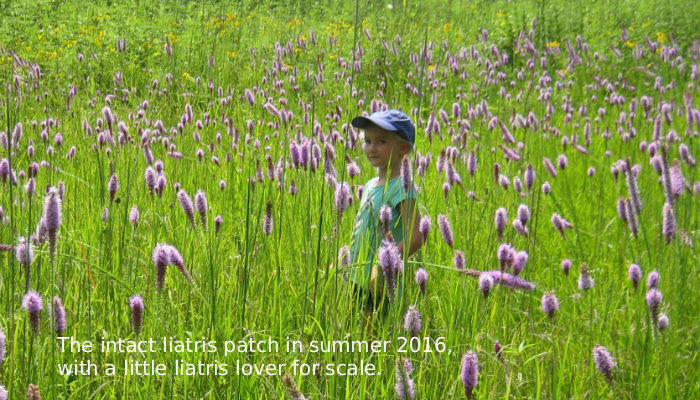Liatris Lesson: Carelessness Has Consequences

Some thirty-odd years ago, I took my geology field class on a walking tour along some railroad tracks in south-central Iowa, looking at glacial exposures and occasionally encountering tiny native prairie remnants. As we walked, I was able to harvest liatris seed and stuff it into the two big pockets of my old army field jacket. A few weeks later in mid-November, I frost-seeded two patches on prepared ground at home, one from each pocket. Both flourished, and for several years I had two really showy stands of flowers in late summer.
But one summer day I was tractor-mowing the firebreak past the pond patch, and accidentally ran over and killed a pair of large bull snakes. By the following year, that patch of liatris where the bull snakes had been living had mostly disappeared. Upon close inspection, the reason became clear. Liatris grows from a shallow corm (similar to a garden crocus bulb), which is preyed upon by mice and voles. The snakes must have been keeping the little critters under control, and after their demise all I had left were shallow holes with liatris husks and roots. In subsequent years the rodent-damaged patch did recover a scattering of the species, but it never again became the glorious swath of magenta like the other one – which continues on today – even though I have tossed a lot of seed on the patch since. I suspect the reason for the recovery failure is that other nearby prairie species quickly filled the niche and now leave no room for new seedlings.
So the lesson for me has been that, even at the small scale of yard and garden, these are little functional ecosystems, with different species playing out their roles, and carelessness on my part has consequences. So please be careful.
Tags: carelessness, ecosystem, Lon Drake

